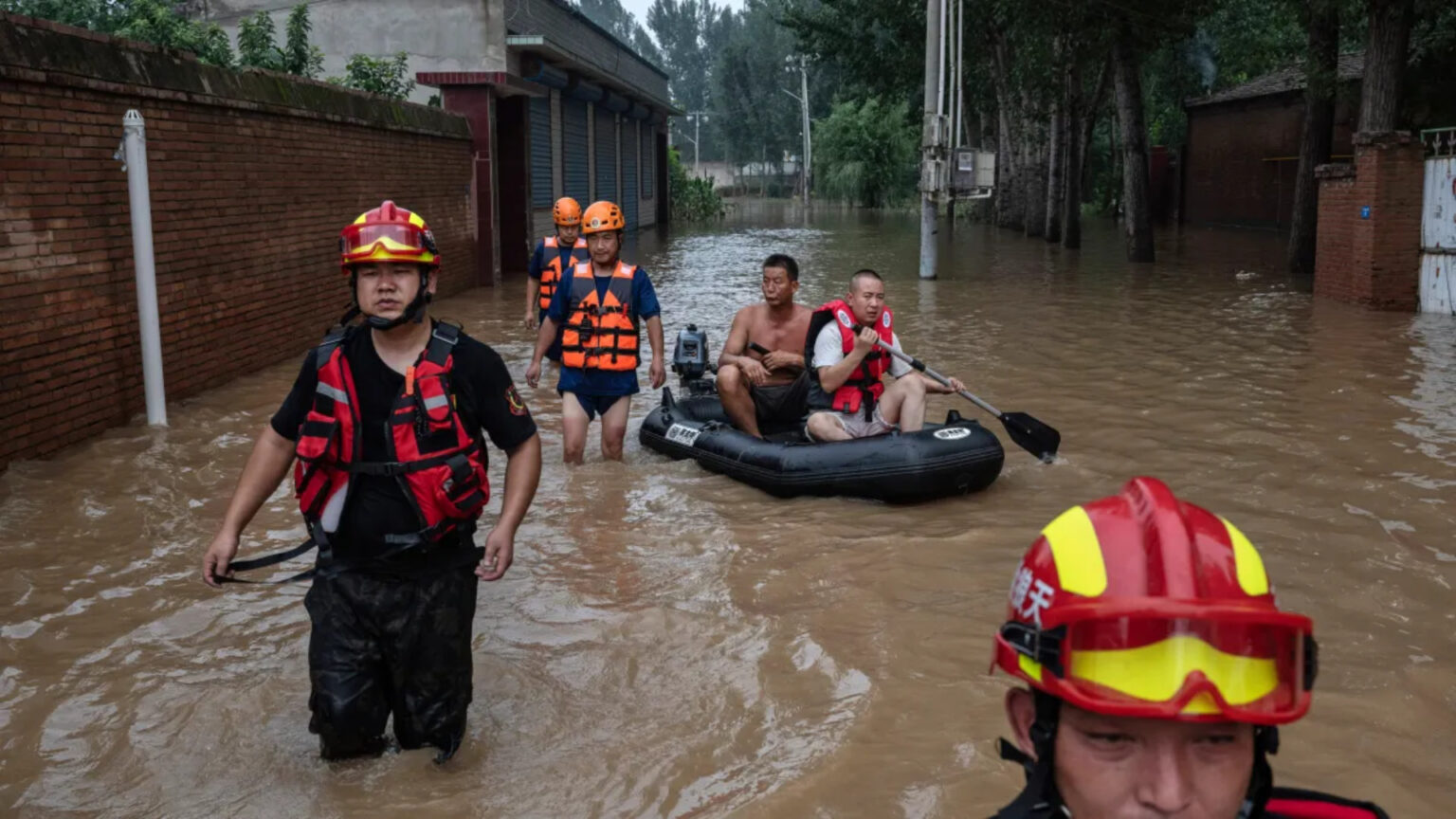The city’s water levels have dropped to a safe level, and emergency response teams have been sent in to rehouse inhabitants and fix damaged infrastructure. According to official media, 14,305 houses had their power restored. After Typhoon Doksuri, cleanup efforts are still underway after flooding and destruction of infrastructure caused by rain.

This past week with floods
Typhoon Doksuri’s floods were blamed for the deaths of 14 people over the past few days in the Chinese city of Shulan.
Since the powerful storm hit landfall in southern Fujian province just over two weeks ago, northeastern China, Beijing, and Hebei province have seen significant rains and flooding.
More than 20 people perished this past week in Beijing and Hebei, in addition to the deaths in Shulan, in the northeastern Jilin province. The number of fatalities in the entire nation has not yet been released by the authorities.
Troops and aids
To help with the flood reaction, evacuations, distribution of supplies, and repair of damaged roads, countless troops have been dispatched into impacted districts of Jilin and neighboring Heilongjiang. Around 2,000 troops and 5,000 paramilitary People’s Armed Police personnel, according to state-run media agency Xinhua, have been dispatched.
Beijing said on Friday that 147 people died or disappeared last month as a result of natural catastrophes, which it blamed on China’s recent record-breaking severe rains.

Following intense rain in the northeastern city of Shulan on Sunday, state-run broadcaster CCTV reported an additional 14 fatalities and one person missing, citing local officials.
According to state media, four local officials, including a deputy mayor, were reported dead after being carried away by floodwaters while en route to investigate the area. Saturday saw the discovery of their bodies.
After over 19,000 people were evacuated and 21 “temporary relocation facilities” were established, Xinhua reported that the area’s heavy rains had now “basically ended.”
The torrential rain that followed Typhoon Doksuri, which first slammed mainland China as a powerful storm before turning north, was the worst since records were first kept 140 years ago.
Cleaning up efforts are still being made after the torrential rains wrecked infrastructure and inundated entire regions.
Authorities have issued a warning that water levels “surpassed the alert line” in certain areas of two significant rivers in Heilongjiang and Jilin, according to Xinhua.
CCTV aired footage of the Heilongjiang province’s recovery operations, showing locals using shovels to remove muddy water from structures.
All to be blamed on Global Warming?
Terrifying storms and protracted heatwaves have affected millions of people recently all over the world, and experts believe that climate change is making these disasters worse.
Additionally, authorities said on Saturday that no fewer than 10 people have died in floodwaters in one of the hardest-hit cities in Hebei province, where over 1.5 million individuals had been evacuated. From Monday and Saturday, Lincheng in Hebei got rain equivalent to two years’ worth, according to the South China Morning Post.
Typhoon Doksuri, which struck Fujian with winds comparable to a category-two hurricane, was the most powerful typhoon to hit China this year.
It had struck the Philippines earlier, killing hundreds of people, and then grazed past Taiwan’s southernmost point, flooding areas and damaging roads.
Typhoon Khanun, which skirted to the north of the territory before making a fast turn and striking Japan’s Okinawa for another time, also inflicted significant damage in some areas of Taiwan.
According to Taiwan’s ministry of agriculture, the most severely damaged counties were Nantou, Miaoli, and Taichung. As of Sunday evening, there were allegedly still more than 100 people trapped in Nantou after torrential rains led to landslides and damaged roadways.













